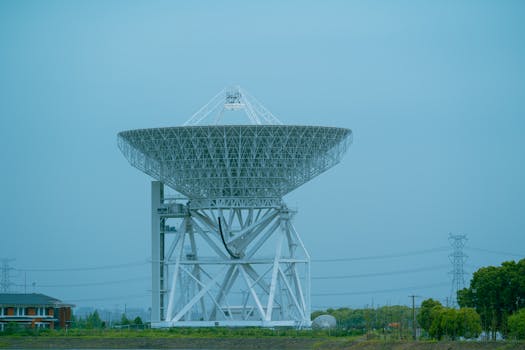Satellite Telecommunications 2023: What’s New and What’s Next? – Satellite Telecommunications

Satellite Telecommunications 2023: What’s New and What’s Next? Satellite Telecommunications
Satellite Telecommunications has become an essential part of modern life, enabling global communication, navigation, and remote sensing. The industry has witnessed tremendous growth in recent years, driven by advances in technology, decreasing costs, and increasing demand for satellite-based services. In this article, we will delve into the current state of satellite telecommunications, highlighting the latest developments, trends, and future prospects.
Current State of Satellite Telecommunications
The satellite telecommunications industry has undergone significant transformations in recent years. One of the most notable developments is the emergence of low-Earth orbit (LEO) constellations, which offer faster, more affordable, and more reliable internet connectivity. Companies like SpaceX, OneWeb, and Amazon’s Kuiper Systems are leading the charge in this area, with plans to launch thousands of satellites in the coming years. These constellations are expected to revolutionize the way we access the internet, enabling seamless connectivity even in remote and underserved areas.
Another significant trend in satellite telecommunications is the increasing use of high-throughput satellites (HTS). HTS systems offer greater bandwidth and faster data transfer rates, making them ideal for applications such as broadband internet, video streaming, and cellular backhaul. The use of HTS has become more prevalent in recent years, with many satellite operators launching new HTS systems to meet growing demand for bandwidth-intensive services.
Emerging Trends and Technologies
Several emerging trends and technologies are expected to shape the future of satellite telecommunications. One of the most exciting developments is the use of quantum computing and artificial intelligence (AI) in satellite systems. Quantum computing can help optimize satellite performance, improve data processing, and enhance cybersecurity, while AI can enable more efficient satellite operations, predictive maintenance, and automated decision-making.
Another area of innovation is the development of new satellite architectures, such as software-defined satellites and programmable satellites. These architectures enable greater flexibility, scalability, and reconfigurability, allowing satellite operators to adapt to changing market conditions and customer needs more quickly. Additionally, advancements in propulsion systems, such as electric propulsion and advanced ion engines, are enabling more efficient and longer-lasting satellite missions.
Future Prospects and Challenges
Despite the many advances and innovations in satellite telecommunications, the industry still faces significant challenges. One of the major concerns is the growing problem of space debris, which poses a threat to operational satellites and the environment. The industry must develop sustainable practices and technologies to mitigate this issue, such as designing satellites for disposal, using debris-removal systems, and promoting international cooperation on space debris management.
Another challenge is the need for regulatory frameworks that support the growth and development of the satellite telecommunications industry. Governments and regulatory bodies must work together to establish clear guidelines, standards, and policies that encourage innovation, investment, and collaboration. This includes addressing issues such as spectrum allocation, licensing, and cybersecurity, as well as promoting international cooperation on satellite-related matters.
Conclusion
In conclusion, the satellite telecommunications industry is undergoing a period of rapid transformation, driven by technological advancements, emerging trends, and growing demand for satellite-based services. As we look to the future, it is essential to address the challenges facing the industry, such as space debris, regulatory frameworks, and sustainability. By working together, we can unlock the full potential of satellite telecommunications and create a more connected, prosperous, and sustainable world for all.




